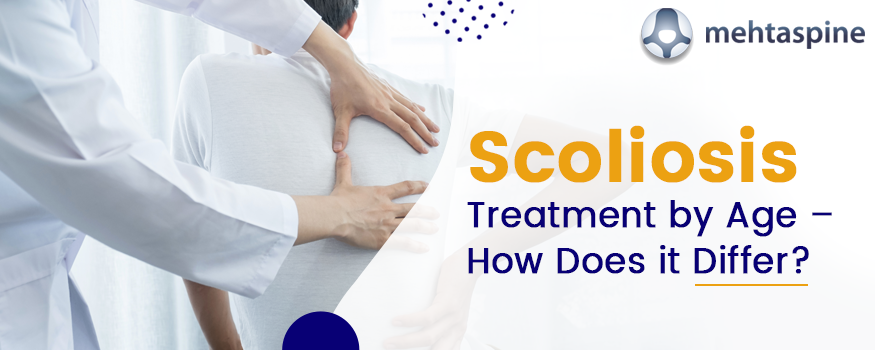Scoliosis Treatment by Age
Scoliosis Treatment : Scoliosis is an abnormal side-to-side curvature of the spine that can happen to anyone with or without a specific reason. As the curvature gets severe, the spine can get twisted or rotated, pulling the ribs along to form a multidimensional curve in the back disfiguring the anatomy of torso.
While the symptoms vary based on severity and type of scoliosis, this abnormal spine condition can happen to teens, adults, the elderly and even babies. So how does scoliosis differ in each case and what is the treatment available in each case? With inputs from an orthopaedic spine surgeon in Birmingham, Mr Jwalant S Mehta we have covered this topic in this blog here. Read on to know:
Scoliosis & Its Treatment in Babies:
Infantile scoliosis is the medical term used for scoliosis detected in babies between the ages of 0-3 years. It accounts for 1% of idiopathic scoliosis in children of which 60% tends to be males. Mild infantile scoliosis is hardly noticeable in infants. Moderate infantile scoliosis may show up in the form of titled or uneven shoulders, prominent ribs, uneven waistline, the difference in limb length or height
Due to the age of the patient, treatment for infantile scoliosis is different compared to other ages. In most cases, scoliosis resolves by itself and in cases in which it doesn’t serial casting or surgery are recommended by spine surgeons. Serial casting is performed after the infant is anaesthetized and the casting is performed many times to adjust for the growth. Similarly, surgery may be performed multiple times to account for the growth.
Scoliosis & Its Treatment in Children:
Scoliosis diagnosed in children between the ages of 3 and 10 years is called juvenile scoliosis. “Due to the rapid growth this juvenile scoliosis has the highest chance to progress to severe form of scoliosis which is why it needs treatment as soon as it is detected”, says scoliosis specialist in London Mr Jwalant S Mehta.
Treatment for juvenile scoliosis usually doesn’t involve surgery. The convention is to wait until a patient finishes his/her growth spurt and then surgical procedures like “growing rods” or “vertebral body stapling” are prescribed by spine specialists to treat scoliosis in children.
Scoliosis & Its Treatment in Adults
Scoliosis in adults is more common (after elderly scoliosis) than in any other age group and they also suffer a greater risk of disability and pain. Scoliosis in adults can be classified into two groups, namely Adult idiopathic scoliosis, Adult degenerative scoliosis. Inability to stand upright, weakness in core musculature, height loss, and uneven alignment of hips and pelvis are other symptoms experienced in both cases.
In the majority of situations, this type of scoliosis can be managed using regular observation, over-the-counter medications, physical therapy or nerve block injections. In severe cases, surgery is recommended to relieve pain, correct spinal imbalance and improve the quality of life of the patient.
Scoliosis & Its Treatment in Elderly
According to research, Scoliosis is found in more than 68% of adults over age 65. Lower back pain is considered the most common condition in this age group and surprisingly, scoliosis is so prevalent that it is even found in elderly with no lower back pain. Pre-existing scoliosis, degeneration of the spine and injury/trauma are common causes of scoliosis in the elderly (age>65).
Surgery is the only treatment option that is prescribed to treat scoliosis among the elderly. However, the surgery to treat the scoliosis in elderly can be quite challenging. Due to the age factor, the time for recovery is longer and the chance of complications and revision surgeries is higher.
However, every case of scoliosis is unique and it demands a customized treatment plan which can only prescribe by the specialist orthopaedic surgeon after carefully assessing the condition of the spine. For more information on treatment for scoliosis, you can contact Children and Adult Spinal Surgeon Mr Jwalant S Mehta .


